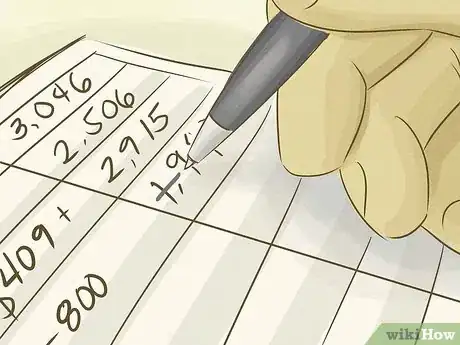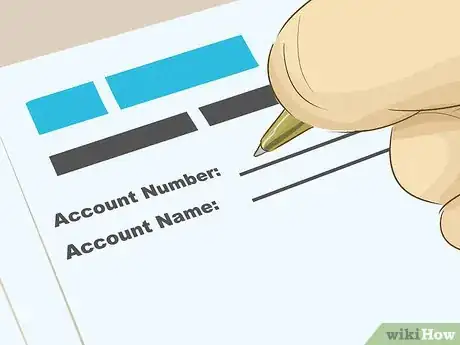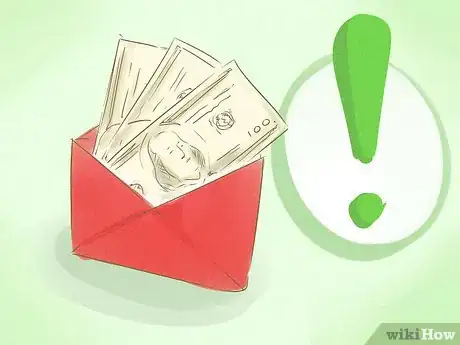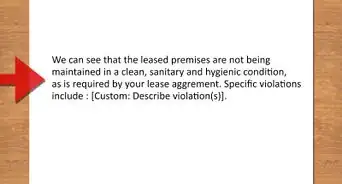This article was co-authored by wikiHow Staff. Our trained team of editors and researchers validate articles for accuracy and comprehensiveness. wikiHow's Content Management Team carefully monitors the work from our editorial staff to ensure that each article is backed by trusted research and meets our high quality standards.
wikiHow marks an article as reader-approved once it receives enough positive feedback. In this case, 88% of readers who voted found the article helpful, earning it our reader-approved status.
This article has been viewed 460,172 times.
Learn more...
In order to attract tenants (lessees), landlords (lessors) will often include incentives in their leasing arrangements. For example, a lessee may be given a cash payment upon signing the lease or may be given several months of free rent. The latter provision, called a "rent free period" in accounting, warrants a special accounting treatment under the United States' Generally Accepted Accounting Principles (GAAP). Learning how to account for rent free periods will allow you to account for leases with special incentives properly.
Steps
Understanding Accounting Concepts
-
1Know how to use dual-entry accounting. Dual-entry (also called double entry) accounting is a fundamental process of modern bookkeeping. It makes sure that every transaction is recorded in the two (or more) accounts that it affects. In addition, it ensures that the sum of these entries is $0 under the equation Assets=Liabilities + Shareholders' Equity. An understanding of dual-entry accounting is essential to accounting for rent-free periods properly.[1]
- For example, a simple cash sale would be recorded as a debit to the cash account (an asset account) and an equal credit to revenue (an equity account). If the item sold is a product, there would also be a credit to Inventory and a debit to the Cost of Goods Sold account.
-
2Understand the amortization process. Amortization is a way of spreading the cost of an intangible asset across the life of that asset. It works much like depreciation does for tangible assets. The cost of the asset is split up evenly over the life of that asset and that amount is recorded as an expense each year. Amortization allows a business owner to spread the cost of an asset out so that the revenue produced by the asset and the cost of the asset are recorded at the same time. [2]Advertisement
-
3Familiarize yourself with the principle underlying the treatment of free rent periods. A free rent period is a type of lease incentive that has a discrete cash value. For example, 2 months of free rent in a $1000/month space has a value of $2000. Any lease incentive of this type must be amortized over the life of the lease on a straight-line basis. This is done by either deferring or accruing rent expenses and revenues as appropriate.[3]
-
4Make sure that the needed accounts are set up. By offering or entering into this type of agreement, both the lessor and lessee will need accounts specific to recording this type of transaction. On the lessor's side, they will need a Rent Revenue account (which they likely already have) and a rent receivable account for recording the rent going unpaid during the rent-free period and then record payments during the subsequent rent period.
- The lessee would need two similar but opposite accounts: Rent Expense and Rent Payable.
Determining Lease Amounts
-
1Make sure you understand the terms of the lease. Before making any calculations or journal entries, you should lay out the terms of the lease. For example, consider an agreement by which the lessor rents an office space to the lessee for 1 year in exchange for a $1000 rent payment each month. As an incentive, the first 2 months of rent are waived.
- As the lessee, you will have to make sure that any rent expenses from a rent-free period are not simply postponed to a later point in the lease. Landlords often use the term "rent-free" to refer to this situation and a truly rent-free setup.[4]
-
2Determine the average rent payment made per month. Revenues and expenses associated with the lease must be spread evenly over the lease term, regardless of when the cash is transferred. Adding together all the rent payments in the example above yields 10 * $1000, or $10,000. Therefore, the average monthly rent is $10,000 / 12, or $833. This amount is used as the monthly revenue or expense.
-
3Find the amount of the rent receivable/payable account paid down each month. Each month, a set amount of rent will be directed towards paying down the value of the rent-free period expense. This amount will be the amount of the rent payment minus the average monthly rent over the lease period.
- In the example, this would be $1,000 - $833, or $167. For the lessee, this would be the amount recorded as a contribution to rent payable each month.
Recording Journal Entries
-
1Record the journal entry to recognize the first month's payment. In the example above, the first month sees no cash changing hands, but revenues and expenses must still be recognized by the two parties through entries in the general journal.
- The lessor would debit Rent Receivable for $833 and credit Rent Revenue for $833. Rent Receivable is an asset account used to recognize the accrual of rent payments due.
- The lessee would debit Rent Expense for $833 and credit Rent Payable for $833. Rent Payable is a liability account used to recognize the accrual of rent payments owed.
-
2Record the journal entries for the second month. The second month's entries are the same for both parties, and cash has still not changed hands. Therefore, the same entries will made as in the first month.
- The account balances of Rent Revenue and Rent Payable are now $1666 each. This balance will be drawn gradually down to 0 over the remainder of the lease.
- Continue this process for the entirety of the rent-free period.
-
3Record the journal entries to recognize each subsequent payment. At the end of each month, a journal entry is needed to record the rent payment and adjust the accrual balances. These entries serve to amortize the rent receivable/payable accounts by the same amount each month until they reach a $0 balance.
- In the example, the lessor would debit Cash for $1000 to reflect the cash receipt. They would credit Rent Revenue for $833 and credit Rent Receivable for $167 to begin drawing down its balance.
- The lessee would debit Rent Expense for $833 and debit Rent Payable for $167 to begin drawing down its balance. They would credit Cash for $1000 to recognize the cash disbursement.
- These entries will be identical each month for the remainder of the lease. Once the final entry is made, the Rent Payable and Rent Receivable accounts will have a balance of $0.
Community Q&A
-
QuestionWhat accounting concepts do I need to know to account for rent-free periods?
 Community AnswerAnyone accounting for rent-free periods will need a working knowledge of dual-entry accounting and amortization procedures.
Community AnswerAnyone accounting for rent-free periods will need a working knowledge of dual-entry accounting and amortization procedures. -
QuestionIf a tenant takes occupation of a property before the lease commencement date from which date should rental payments be reflected in the profit and loss account?
 Community AnswerRegardless of when the tenant actually moves in, the rent-free expense is still amortized over the lease period. The same goes for rental payments, which should be recorded for the months that they correspond to.
Community AnswerRegardless of when the tenant actually moves in, the rent-free expense is still amortized over the lease period. The same goes for rental payments, which should be recorded for the months that they correspond to. -
QuestionWhat if lessor is paying cash incentive 1 year prior to the inception of lease extension, does deferred credit not begin until lease renewal or at time of cash transfer?
 Community AnswerThe deferred credit would begin at the start of the lease renewal.
Community AnswerThe deferred credit would begin at the start of the lease renewal.
References
About This Article
To attract tenants, landlords might offer incentives in their lease, like a rent-free month, but you’ll need to account for these periods under the Generally Accepted Accounting Principles. To record these transactions, the lessor will need a Rent Revenue account and a Rent Receivable account. The lessee will need a Rent Expense account and a Rent Payable account. Revenues and expenses associated with the lease must be spread evenly over the term of the lease. For example, if the lease is for 12 months with 2 months rent free and the rest set at 1 thousand dollar payments, you’d divide the total payment of 10 thousand dollars by 12 to get 833 dollars for the monthly revenue or expense. To learn how to find the amount of the rent receivable or payable account paid down each month, keep reading!






































































